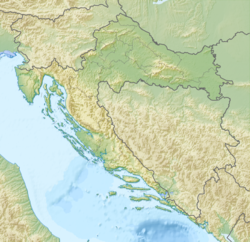| Dubrovnik Synagogue Old Synagogue | |
|---|---|
 The exterior of the synagogue in Old town Dubrovnik | |
| Religion | |
| Affiliation | Orthodox Judaism |
| Rite | Nusach Edot HaMizrach |
| Ecclesiastical or organisational status | Synagogue |
| Status | Active (High Holy Days only) |
| Location | |
| Location | Žudioska 5, Old Town, Dubrovnik, Dubrovnik-Neretva County |
| Country | Croatia |
Location of the synagogue in Croatia | |
| Geographic coordinates | 42°39′02″N18°05′29″E / 42.65056°N 18.09139°E |
| Architecture | |
| Type | Synagogue architecture |
| Style | Baroque |
The Dubrovnik Synagogue, commonly called the Old Synagogue, is an Orthodox Jewish synagogue, located in Dubrovnik, Croatia. The synagogue is the oldest Sefardic synagogue in use in the world and the second oldest synagogue in Europe. [1] It is said to have been established in 1352, but gained legal status in the city in 1408. [2] Owned by the local Jewish community, the main floor functions as a place of worship for the High Holy Days and special occasions, and is now mainly a Jewish museum which hosts numerous ritual items and centuries-old artefacts. [3]





